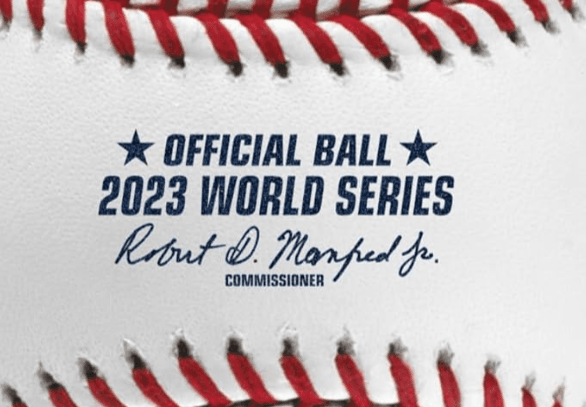As the 2024 World Series captivates the world, the economics behind this massive sporting event become a crucial part of the conversation. While fans focus on the thrilling games and team rivalries, economists and sports experts like King Banaian, Phil Miller, and Jim Reese turn their attention to the financial and economic forces that drive the Economics of the World Series and Major League Baseball (MLB) at large. On Thursday morning, these experts will gather for a special episode of Radioeconomics to discuss “The Economics of the World Series.” This podcast, available for live streaming and download later in the day, promises to provide an in-depth analysis of the numbers behind America’s favorite pastime.
This article aims to build on that discussion, offering a preview of key economic issues surrounding the 2024 World Series while encouraging listeners to tune in to the podcast for a deeper conversation.
[ez-toc]
The Business of Baseball in 2024
Baseball is not just a game; it’s a billion-dollar business, and the World Series is the crown jewel of the MLB’s economic empire. Ticket sales, broadcasting rights, advertising, and merchandise all contribute to the revenue generated during this annual event. But how has the economics of baseball evolved in 2024, and what are the key factors driving its financial success?
1. Record Revenue from Broadcasting and Media Rights
In 2024, the World Series continues to be one of the most-watched sporting events in North America, drawing millions of viewers worldwide. The value of media rights deals has reached new heights, as networks like Fox, ESPN, and even streaming services like Amazon Prime bid aggressively for the rights to broadcast the games. The importance of broadcasting has only grown as consumers shift from traditional cable to digital platforms, increasing competition among networks to secure exclusive deals.
For instance, the current MLB broadcasting deal with Fox is valued at over $5.1 billion over seven years. This lucrative agreement ensures that MLB can maintain financial stability, and the World Series is the pinnacle of this arrangement. Advertising during the World Series has become increasingly valuable, with 30-second ad slots going for millions of dollars due to the massive viewership. The high demand for these slots demonstrates the series’ cultural and economic significance, not just in sports but across the broader entertainment landscape.
2. The Impact of Dynamic Ticket Pricing
Ticket sales are another critical aspect of the World Series economy. In 2024, dynamic ticket pricing continues to be the norm, where prices fluctuate based on real-time demand. Teams and ticket platforms use advanced algorithms to adjust ticket prices, with factors like team performance, player popularity, and game significance driving prices up or down.
For example, during a Game 7 scenario, ticket prices can soar to astronomical levels as the finality and stakes of the match increase demand. In the 2024 World Series, where teams like the New York Yankees or Los Angeles Dodgers may be involved, ticket prices for premium seats have reached upwards of $5,000 or more for certain games. These figures not only reflect the passion of the fan base but also how technology and economics intersect in modern sports.
3. Merchandising and the Fan Experience
The World Series is also a merchandising goldmine. Fans eagerly purchase everything from team jerseys to World Series memorabilia, with 2024 offering a wide array of official licensed merchandise both in stadiums and online. The growth of e-commerce has made it easier for fans worldwide to participate in the World Series frenzy by purchasing branded gear.
Beyond just physical merchandise, MLB has embraced the digital economy through NFTs (Non-Fungible Tokens). In 2024, collectible digital assets, such as video highlights or virtual player cards, have become a popular way for fans to engage with the sport. For example, moments from key games in the World Series can be minted as NFTs and sold to fans as part of a growing sports collectible market. The introduction of this technology adds a new revenue stream to the traditional merchandise business model.
Economic Implications for Host Cities
Another fascinating aspect of the World Series economics is the impact on the cities that host the games. Each game brings in thousands of fans, driving up revenue for local businesses such as hotels, restaurants, and transportation services. Host cities like Boston, Los Angeles, or Chicago see a significant economic boost during the World Series as fans flock to the area for a few days, spending money and contributing to the local economy.
According to recent studies, a single World Series game can generate anywhere from $6 to $12 million in local economic impact, depending on the city and venue capacity. In 2024, this trend continues, with cities that host multiple games seeing an influx of tourism dollars. However, there’s also a downside: cities need to invest heavily in infrastructure, security, and services to accommodate the surge of fans. While the immediate economic benefits are clear, some economists question the long-term return on investment for cities that bid to host major sporting events like the World Series.
Player Salaries and Team Payrolls: A Financial Tug-of-War
One of the hottest topics in sports economics is player salaries and their impact on team budgets. In the 2024 season, MLB payrolls continue to skyrocket, with teams spending hundreds of millions of dollars to field competitive rosters. The Los Angeles Dodgers, for instance, maintain one of the highest payrolls in the league, with star players commanding annual salaries exceeding $30 million.
However, the rising cost of player contracts puts pressure on smaller-market teams that cannot afford to spend as lavishly. Teams like the Tampa Bay Rays or Oakland Athletics face a constant struggle to remain competitive while maintaining more modest payrolls. This disparity raises questions about the long-term sustainability of the current financial model in Major League Baseball, where big-market teams have a clear financial advantage over their smaller-market counterparts.
The collective bargaining agreement (CBA) between the MLB and the MLB Players Association is an ongoing factor that shapes this economic dynamic. Negotiations in recent years have focused on revenue sharing and salary caps, with the aim of creating a more level playing field. In the 2024 season, however, the gap between the richest and poorest teams remains substantial, contributing to a wider conversation about competitive balance in the sport.
The Role of Sponsorship and Corporate Partnerships
Corporate sponsorships play a huge role in the World Series economy, with major companies vying for exposure during baseball’s most-watched event. From stadium naming rights to exclusive advertising deals, brands spend big money to be associated with the World Series. For instance, in 2024, Nike continues to be one of the MLB’s most visible partners, providing uniforms for all teams while capitalizing on the World Series’ massive audience.
Other key sponsors, such as Mastercard, Chevrolet, and Coca-Cola, also use the World Series as a platform to showcase their brands, often with special promotions or campaigns tailored specifically for the event. These partnerships are mutually beneficial, as they provide companies with significant brand exposure while giving MLB additional revenue streams beyond ticket sales and broadcasting.
Future Trends in World Series Economics
Looking ahead, several trends are poised to further impact the economics of the World Series and Major League Baseball as a whole.
1. Global Expansion
As MLB looks to expand its global reach, particularly in markets like Asia and Latin America, the World Series could become an even larger international event. Broadcasting deals with foreign networks, international merchandise sales, and global sponsorships are all areas of growth that could further drive up the revenue associated with the World Series.
2. Sustainability and Green Initiatives
As environmental concerns become more pressing, sports leagues, including MLB, are under increasing pressure to adopt sustainable practices. In 2024, many stadiums are making efforts to reduce their carbon footprints, and the World Series presents an opportunity to showcase these initiatives. From reducing plastic waste in stadiums to promoting renewable energy use, the economics of sustainability will likely play a larger role in future World Series events.
3. Technological Integration
Finally, technology continues to shape the fan experience, both in the stadium and at home. The use of virtual and augmented reality, advanced data analytics, and fan interaction through social media platforms all enhance engagement, creating new ways for MLB to monetize the World Series. In 2024, the World Series is not just about watching the game—it’s about participating in a global sports phenomenon in real time.
Tune In to Thursday’s Podcast: Don’t Miss the Full Discussion
For those looking to dive deeper into the economics of the World Series, don’t forget to tune in to Radioeconomics on Thursday morning. King Banaian, Phil Miller, and Jim Reese will bring their extensive knowledge of sports economics to the table, offering insights into the financial forces behind the 2024 World Series. Whether you listen live or download the podcast later, this discussion is not one to miss.


